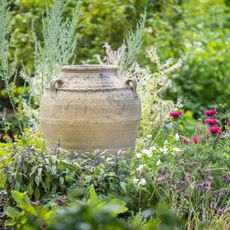Eating Bugs From The Garden – Put Pests On Your Dinner Plate
Edible bugs are a familiar diet staple in 130 countries. In the not-too-distant future eating bugs may become a normal part of our daily lives.


The world is a strange place and it will likely get stranger still. There might be a future where we are all eating bugs. Edible insects are not a new concept except in Western society. Many civilizations have hailed them as a gustatory delight for centuries. The practice of eating insects is called “entomophagy.” Bugs as food provide protein, vitamins, and essential fatty acids, and are sustainable. They are also low in fat and come in a wide variety of sizes and tastes.
Isn’t It Gross to Eat Bugs?
To some people, eating bugs sounds rather peculiar, if not downright disgusting. However, around 2 billion people worldwide include them in their diets. People in approximately 130 countries eat wild insects, and over 2,000 species are eaten worldwide. That’s quite a big menu! Proponents suggest eating bugs can help cut down on insecticide use. I’m not sure that will happen, but with a host of health benefits, the high cost of food and its production, and the impact modern farming and ranching currently has on the earth, why not eat the bugs?
Benefits of Eating Bugs
Before considering the benefits of edible bugs, we must first get over our prejudice. When we consider the practice has gone on for tens of thousands of years, it is easier to stomach. Bugs are readily available. They multiply quite easily and in certain regions they are pests. Healthwise, the protein content of 3.5 ounces (100 grams) of crickets is 2.44 ounces (69 grams). Nutritionally this is comparable to meat but on a tinier scale.
An unexplored benefit may be in the farming practice. Insect raising requires far less land and resources than our traditional foods. They produce less than 1 gram of greenhouse gas per kilogram of protein. Beef produces 2,850 grams for an equal amount of protein.
Types of Edible Bugs
Not all bugs are edible and not all are tasty. Some are bitter, while others may be toxic. The most commonly found edible insect commercially is the cricket. These aren’t just for pet reptiles anymore. They are being used in many types of foods and made into a flour for use in baking. Other common insects that are eaten are beetles, caterpillars, ants, grasshoppers, termites, true bugs, cicadas, and wasps. Mealworms are also becoming commonplace in foods and are fairly available.
How to Eat Bugs From Your Garden
The number one concern when harvesting insects is to source them from an area that has not been exposed to pesticides. Make sure you are 100% sure an area is pesticide-free before proceeding.
You can collect bugs manually or use a net or jar. Once you have your insects, freeze them for 15 minutes. This will not directly kill most species but will put them in an inert state. Wash the insect before preparing it. The best flavor experience will be when they are cooked. Most types can be sauteed in oil or butter with whatever seasonings you prefer. The insects may also be boiled in salted water. Some parts of insects are unpleasant but can be easily pulled off after cooking.
Gardening tips, videos, info and more delivered right to your inbox!
Sign up for the Gardening Know How newsletter today and receive a free download of our most popular eBook "How to Grow Delicious Tomatoes."
Cautions Regarding Insect Consumption
There haven’t been too many serious studies on detrimental effects, but common sense would indicate a few warnings. Insects are consumed whole and could be holding chemicals, especially insecticides in their bodies. They are also a potential allergen, especially for those allergic to shellfish and mushrooms. This is due to the chitin. The insect has the potential to carry bacteria, fungi, and parasites that can be damaging to our health. Some parts may cause swallowing issues such as stingers, wings, and hard mouth parts.
Frequently Asked Questions
How Healthy Is Eating Bugs?
The health benefits regarding the protein content in insects can rival those from plant and legume diets. In larger consumption, it is comparable to animal protein. Chitin, which is found in the exoskeleton of many insects, has been found to potentially enhance gut health. It encourages healthy bacteria and may reduce stomach inflammation. Filled with many beneficial vitamins and minerals, these tiny terrors may be the answer to the world’s food shortage.
What Is the Eating of Bugs Called?
Entomophagy is the practice of eating insects, and is already a common practice in many parts of the world. If we give it a try, it has the potential to help us minimize our impact on the Earth’s health.

Bonnie Grant is a professional landscaper with a Certification in Urban Gardening. She has been gardening and writing for 15 years. A former professional chef, she has a passion for edible landscaping.
-
 Front Yard Herb Garden Ideas To Spice Up Your Landscape
Front Yard Herb Garden Ideas To Spice Up Your LandscapeUse your imagination and plant a lovely front yard herb garden. You’ll love the convenience, the fragrance and the beauty, and pollinators will appreciate it.
By Amy Grant
-
 When To Clean Up Garden Beds In Spring To Protect Pollinators
When To Clean Up Garden Beds In Spring To Protect PollinatorsEvery spring, I'm reminded that many species of insects have used my garden as a winter hotel and may not be ready for a wake-up call just yet.
By Teo Spengler